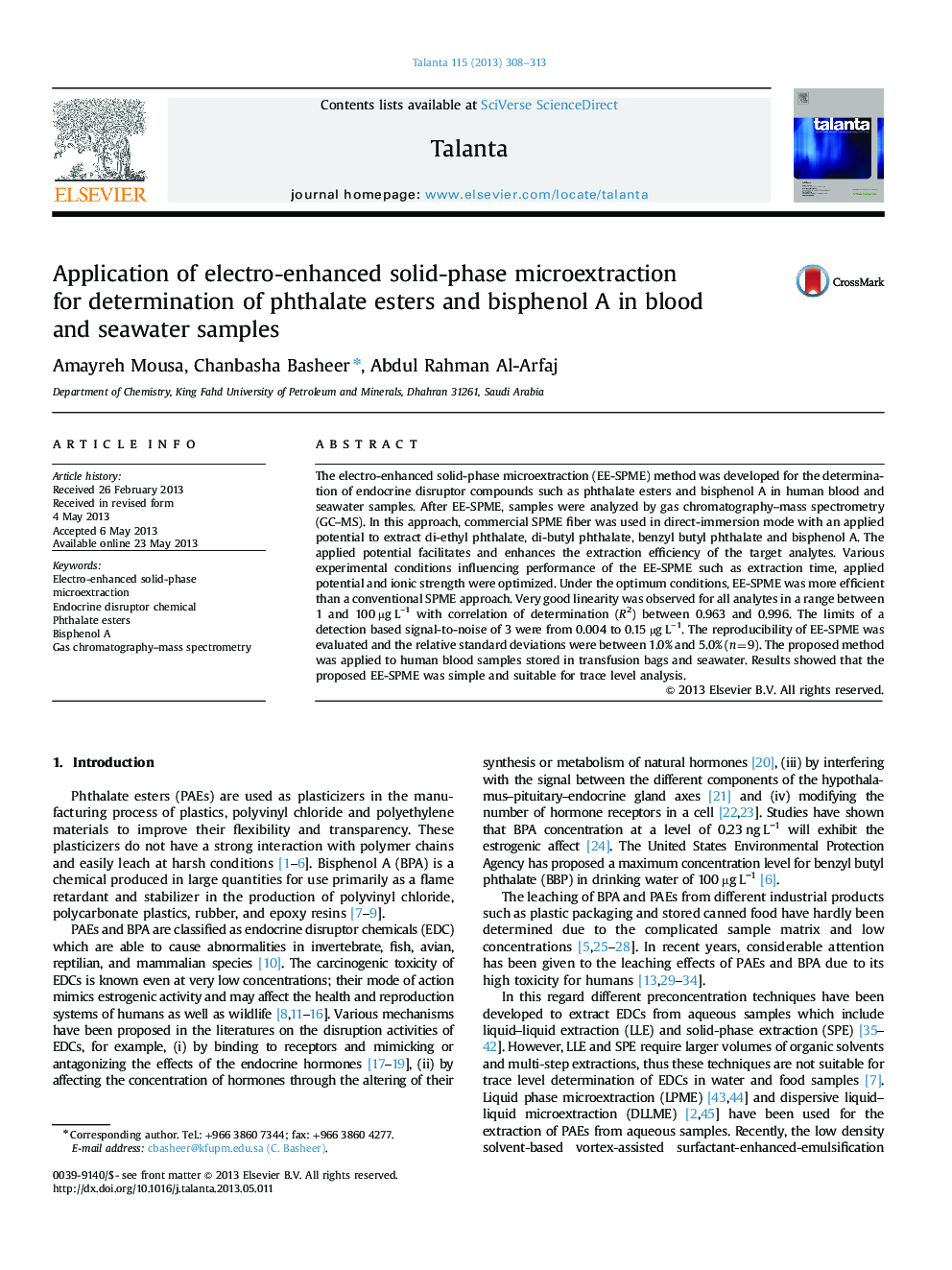| Article ID | Journal | Published Year | Pages | File Type |
|---|---|---|---|---|
| 7682201 | Talanta | 2013 | 6 Pages |
Abstract
The electro-enhanced solid-phase microextraction (EE-SPME) method was developed for the determination of endocrine disruptor compounds such as phthalate esters and bisphenol A in human blood and seawater samples. After EE-SPME, samples were analyzed by gas chromatography-mass spectrometry (GC-MS). In this approach, commercial SPME fiber was used in direct-immersion mode with an applied potential to extract di-ethyl phthalate, di-butyl phthalate, benzyl butyl phthalate and bisphenol A. The applied potential facilitates and enhances the extraction efficiency of the target analytes. Various experimental conditions influencing performance of the EE-SPME such as extraction time, applied potential and ionic strength were optimized. Under the optimum conditions, EE-SPME was more efficient than a conventional SPME approach. Very good linearity was observed for all analytes in a range between 1 and 100 µg Lâ1 with correlation of determination (R2) between 0.963 and 0.996. The limits of a detection based signal-to-noise of 3 were from 0.004 to 0.15 µg Lâ1. The reproducibility of EE-SPME was evaluated and the relative standard deviations were between 1.0% and 5.0% (n=9). The proposed method was applied to human blood samples stored in transfusion bags and seawater. Results showed that the proposed EE-SPME was simple and suitable for trace level analysis.
Keywords
Related Topics
Physical Sciences and Engineering
Chemistry
Analytical Chemistry
Authors
Amayreh Mousa, Chanbasha Basheer, Abdul Rahman Al-Arfaj,
